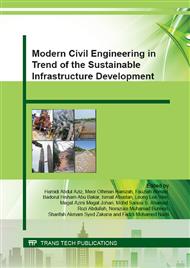p.290
p.295
p.303
p.309
p.315
p.321
p.327
p.333
p.339
The Effects of Bituminous Binders on Cold Recycled Mixes Prepared by the Foamed Bitumen Technology
Abstract:
The foamed bitumen technology is experiencing a global renaissance and rather extensive development of innovative approaches with respect to both, its application and research, is clearly visible. However, the variability of available bituminous binders for utilization within the technology is quite large; therefore, a general methodology of quality parameters determination for foamed bitumen and the requirements for mixes bound by this type of binder must be specified.In general different types of pen grade bituminous binders can be used for producing the foam. Besides the pen grades which are defined by penetration and also its viscosity, the source of the bitumen can have important effect on final foamed bitumen quality given especially by its expansion ratio and stability of the foam as well. Experimental study has been done to compare different types of bitumen from different sources to assess the effects on the foamed bitumen and on cold recycled mixes produced by these binders. In parallel the effect of a suitable foaming agent has been assessed as well. The foamed bitumen was analyzed by its expansion ration, half time defining the stability of the foam and the so called foam index. Cold recycled mixes were produced with one type of reclaimed asphalt material and different foamed bituminous binders. For the mix assessment mainly indirect tensile strength, water susceptibility and stiffness modulus have been considered. Results and comparison of the evaluated effects are presented in this paper.
Info:
Periodical:
Pages:
315-320
Citation:
Online since:
October 2015
Authors:
Price:
Сopyright:
© 2015 Trans Tech Publications Ltd. All Rights Reserved
Share:
Citation:


